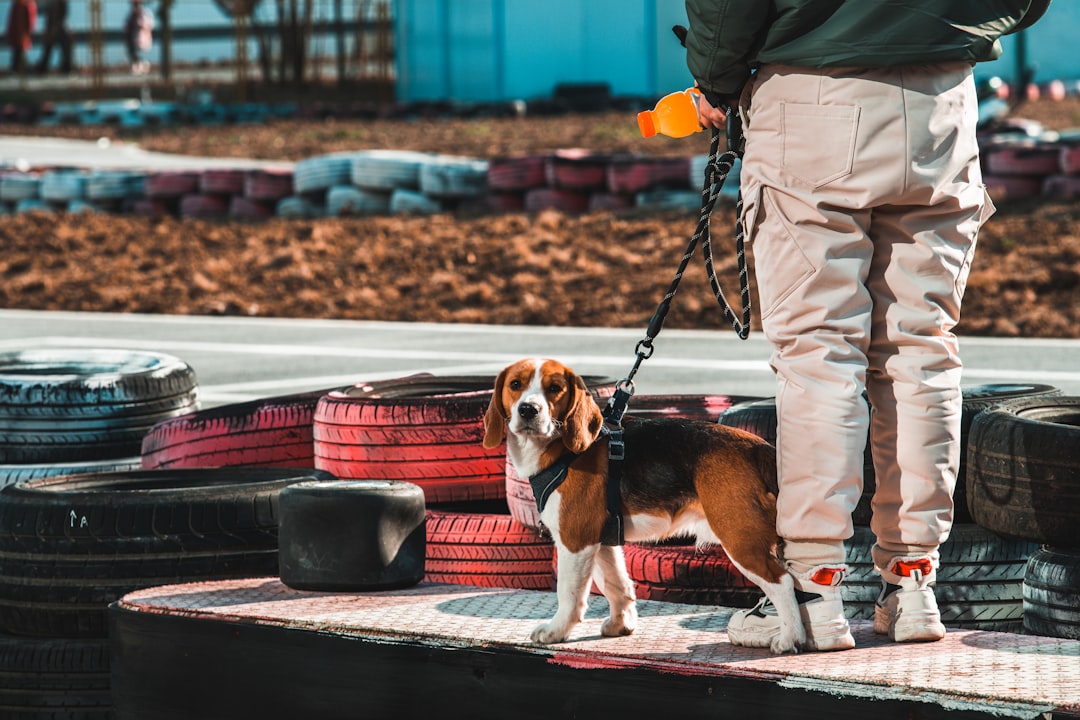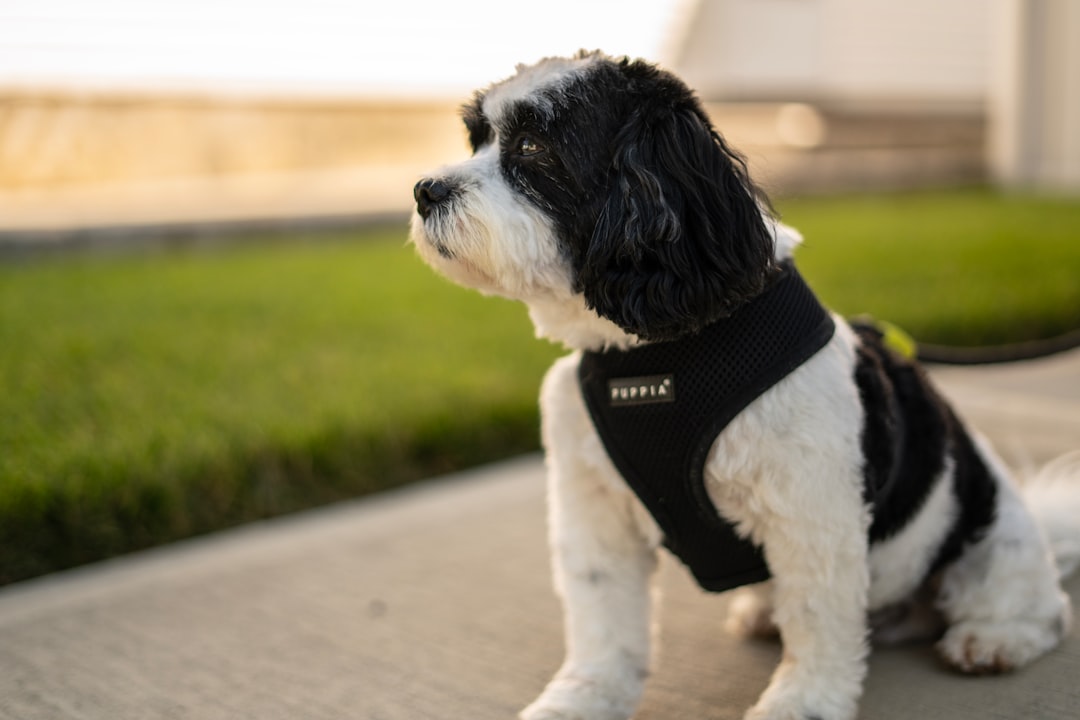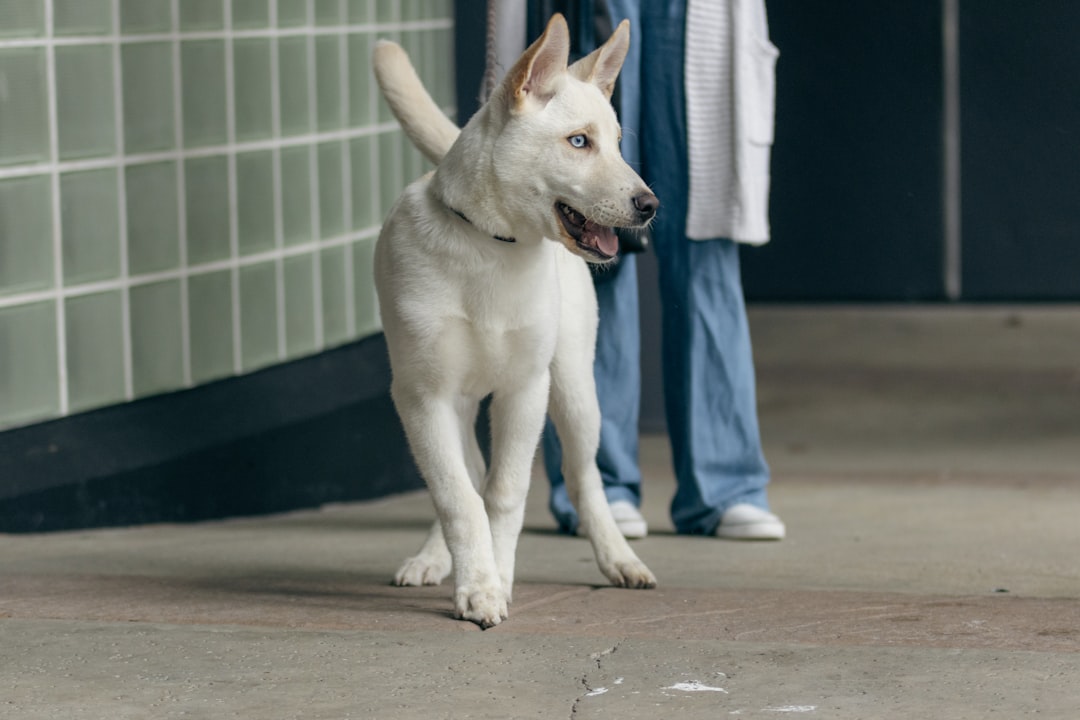

Engage prospects with a scan and streamline customer engagement with FREE QR code marketing tools by Sona – no strings attached!
Create a Free QR CodeFree consultation

No commitment

Engage prospects with a scan and streamline customer engagement with FREE QR code marketing tools by Sona – no strings attached!
Create a Free QR CodeFree consultation

No commitment
QR codes have become a strategic powerhouse in bridging offline engagement with online action. For dog training equipment retailers, QR codes offer a fun, frictionless, and effective way to boost customer engagement without requiring an app download or complex setup. They make it simple for shoppers to move from in-aisle curiosity to online action in seconds.
Retailers of dog training gear, whether in brick-and-mortar shops or online marketplaces, face increasing pressure as pet owners demand seamless, informative, and trustworthy shopping experiences. A persistent challenge is converting in-store curiosity or printed collateral into a meaningful digital relationship, especially when potential leads browse but do not self-identify. QR codes help retailers transform these missed connection points into targeted gateways for engagement. For channel-specific tactics, explore Sona QR’s retail industry guide.
By unlocking the potential of QR codes, dog training equipment retailers can gain visibility into high-intent visitors, personalize outreach, and recover opportunities often lost from overlooked offline signals. Integrating QR codes connects physical inventory to digital resources, automates appointment bookings, gathers instant reviews, and continually enriches customer data, helping every product or interaction become a measurable asset. See what’s possible in Sona QR’s product overview.

QR codes bridge the gap between physical touchpoints and digital outcomes, making it easier to achieve real business goals like increasing customer engagement and driving more conversions for dog training equipment retailers. When a customer scans a code on a leash or clicker, they can be taken straight to tutorials, reviews, and offers that answer questions and reduce hesitation. For hands-on training tactics, see this QR codes for dog training example.
A major hurdle retailers face is missing high-value prospects who browse but never fill out a form or create an account. This often happens because traditional paper-based tactics or passive displays are not trackable or actionable. Without knowing who is interested, follow-up and tailored offers become guesswork. QR interactions provide the permission-based, intent-rich signals that unlock personalized communication at scale, a theme explored in Sona’s blog post The Essential Guide to Intent Data.
Modern QR automation platforms make it easy to update campaigns, collect behavioral insights, and adapt to changing customer demands. With Sona QR, retailers can manage dynamic links for every code, refresh offers without reprinting, and pair scans with automated messaging and retargeting sequences that keep customers engaged.

Dog training equipment retailers often struggle to trace offline interactions, like browsing aisles or handling products, back to real marketing or sales outcomes. A key pain point is not knowing which prospects are evaluating equipment or which features are driving interest, since anonymous foot traffic rarely leaves a digital footprint. This disconnect leads to missed follow-ups and incomplete understanding of customer preferences.
QR codes act as a seamless connector. One quick scan can transform a missed prospect into a trackable lead, providing immediate value on both sides. Codes placed on packaging and signage tie purchase intent to actual interest and content consumption, surfacing insights that would otherwise be invisible. For example, if most scans on a no-pull harness lead to a fit tutorial, you can assume fitting confidence is a friction point and tailor in-store coaching accordingly. Pet retailers can draw inspiration from vet storefront marketing and adapt similar QR tactics to their aisles and windows. When planning placements, use product packaging as a reliable, high-intent touchpoint.
Some key advantages include:
When deployed with intent, QR codes turn previously hidden customer journeys into measurable pathways you can capture, nurture, and optimize over time.

Selecting the right QR format ensures the intended interaction is as smooth as possible. Dog training retailers frequently need rapid access to tutorials, service booking, or direct communication. Use formats that match the customer’s context and your campaign goals.
Dynamic QR codes are recommended for most campaigns that require tracking, message updates, A/B testing, or integrations. Static QR codes can work for permanent resources like a PDF care guide or a general FAQs page. With Sona QR, you can manage both types in one place, update destinations, and preserve performance history across iterations.

Growth-focused retailers understand that the best QR placement mirrors natural customer behavior. Look for the physical locations and materials where shoppers already show intent, then turn those touchpoints into action and data capture.
Every physical touchpoint becomes an active channel. The result is not only more engagement, but also cleaner attribution, richer customer profiles, and more relevant follow-ups that move the needle.

Use Case 1: Product information and tutorial access. Many prospects browse shelves but hesitate to purchase due to uncertainty about fit or function. QR codes let customers instantly access video demos, sizing guides, or trainer tips, building trust and increasing conversion confidence.
Use Case 2: Review and feedback collection. Post-purchase feedback is often missed when collection tools are inconvenient. QR codes on receipts, packaging inserts, and counter tents make it easy to leave a testimonial or answer a one-question survey, improving online reputation and guiding inventory decisions. For simple survey flows, use QR surveys.
Use Case 3: Loyalty program activation. Missed upsell and retention opportunities occur when shoppers lack awareness of loyalty offers. QR placement at checkout or on packaging enables frictionless program signups, unlocks digital punch cards, and supports targeted reward campaigns.
These use cases map directly to common shopper behaviors in this niche, converting casual interest into measurable progress through the funnel.
Each QR scan is a strong signal. It captures context, content preference, and timing. By deploying unique codes across touchpoints, you can create behavior-based segments that power precise retargeting, personalized email flows, and thoughtful sales outreach that feels helpful, not pushy.
Start by assigning unique QR codes to individual assets. A leash packaging code, a training class poster code, and an event handout code should not be the same. This preserves the detail needed to understand the shopper’s intent and stage in the journey, then respond with the right message.
For this vertical, consider segments like new puppy owners, existing customers seeking agility upgrades, and owners shopping for behavior correction tools. Each group has distinct content needs and price sensitivities. QR-driven segmentation ensures your follow-up feels bespoke and timely.
QR codes serve as connective tissue across your entire go-to-market plan. They turn static media into responsive experiences while adding measurement to channels that have historically been hard to track. The result is a coordinated funnel where shoppers can take action the moment interest strikes.
Here is how QR codes enhance a multi-channel strategy for dog training equipment retailers:
By centralizing QR management in Sona QR, you can coordinate creative and destinations across channels, monitor performance, pass scan data to your CRM, and keep campaigns aligned with changing inventory and trainer availability.
Strong QR campaigns start with clarity of purpose and end with measurable outcomes. Treat each deployment as a testable, optimizable program that connects physical shopper behavior to digital follow-up.
A disciplined, iterative approach will surface actionable insights from every customer interaction. Each rollout becomes a feedback loop that sharpens your offers, creative, and placements for the next cycle.
Counting scans is useful, but it is only the starting point. Retailers need to know which QR placements trigger quality engagement, how those interactions translate into purchases, and where to allocate resources for maximum impact. Without clear attribution, even strong scan volume can mask underperforming experiences.
Advanced QR platforms make it possible to connect scans to outcomes and revenue. You can analyze engagement by channel and context, enrich customer profiles automatically, and use identity resolution to tie repeat scans and visits together. This provides a coherent story of how your offline touchpoints contribute to pipeline and retention.
Sona QR captures real-world engagement signals. Sona.com turns those signals into actionable insights that link scans to revenue, empowering retailers to optimize spend, justify investments, and scale what works.
QR programs thrive when they are tailored to your store layout, product mix, and customer journey. A few best practices can increase scan rates, improve conversion, and keep your team aligned on how to use QR codes to enhance service and sales.
Creative deployment examples include a QR on a training mat that unlocks a 5-minute household training routine, and a QR on a collar tag insert that links to a reward points enrollment screen. These placements meet customers where they are and turn utility into loyalty. For visual inspiration, see this short QR marketing tutorial.
Adopting integrated QR systems allows retailers to move quickly as new needs arise. You can generate and track your first QR codes for free with Sona QR, then build on early wins with more sophisticated campaigns.
Retailers across the pet and training space are already seeing results from thoughtful QR integrations. The most successful programs meet shoppers at moments of curiosity and convert that attention into value, then into loyalty.
Consider incorporating staff spotlights or trainer success stories through QR-enabled profiles. Shoppers often trust guidance from real people. When they can scan to see a trainer’s credentials, watch a quick tip, or book a session, that human connection becomes a powerful driver of conversion.
Strong QR programs rely on smart placement, clear value propositions, and consistent upkeep. The most avoidable mistakes stem from treating QRs as an afterthought rather than integrating them into store operations and customer journeys.
Sustained success comes from weaving QR activation into everyday workflows. When staff see QR codes as a service enhancer and a sales enabler, adoption increases, data quality improves, and customers receive more timely, relevant support.
For dog training equipment retailers, QR codes are a lever for transforming every product, display, and in-person encounter into a fully measurable, conversion-focused opportunity. They reduce friction in the buying journey, make print and in-store media actionable, and provide a continuous feedback loop that drives smarter decisions.
They enable:
With Sona QR, you have everything needed to capture demand at the source and turn each scan into measurable impact. Start by enabling a few strategic placements, then iterate with data. As your program matures, connect Sona QR and Sona.com to unify offline and online behavior, attribute revenue, and scale the playbook that works. Start creating QR codes for free.
QR codes have transformed dog training equipment retailers from traditional sales points into interactive, measurable engagement hubs. Whether it’s attracting new pet owners, enhancing in-store experiences, or providing instant access to product tutorials, QR codes turn every display into a powerful tool for customer connection and education. Imagine knowing exactly which product demos or training tips motivate purchases—and being able to optimize those touchpoints instantly.
With Sona QR, you can create dynamic, trackable QR codes in seconds, update campaigns on the fly without reprinting, and link every scan directly to sales data. This means no missed chances to engage dog owners and no guesswork about which marketing efforts truly drive revenue. Start for free with Sona QR today and transform every scan into a loyal customer and a confident sale.
QR codes help dog training equipment retailers connect offline interactions with online engagement by providing instant access to tutorials, reviews, and offers, enabling trackable leads, personalized communication, and measurable customer data.
Retailers can place QR codes on product packaging, shelf talkers, receipts, and signage to direct customers to videos, appointment bookings, loyalty programs, and feedback forms, turning physical touchpoints into actionable digital experiences.
Common formats include web links for tutorials and product info, vCards for trainer contacts, SMS or email for quick inquiries, Wi-Fi access for in-store browsing, and app download links for loyalty and registration purposes.
Effective placements include product packaging, instruction cards, demo zones, checkout counters, receipts, direct mail, event booths, training workshops, and smart pet tags to capture high-intent shopper behavior.
QR codes provide data on scan volume, timing, device type, and location, which can be integrated into CRM systems to attribute engagement, track revenue impact, and segment audiences for personalized marketing and retargeting.
Start by defining clear goals, choose appropriate QR types, design branded codes with clear calls to action, deploy codes in high-traffic and high-intent areas, and continuously monitor and optimize performance based on analytics.
QR codes on receipts and packaging inserts enable easy collection of reviews and feedback, facilitate product registrations, and promote loyalty program signups, enhancing customer retention and social proof.
Avoid placing QR codes in low-visibility or hard-to-scan areas, do not neglect updating dynamic links, ensure staff promote scanning benefits, and integrate QR codes thoughtfully into store workflows to maximize adoption and data quality.
By assigning unique QR codes to different products, locations, and campaign stages, retailers can capture detailed shopper intent and behavior to create segmented audiences for personalized email flows, SMS, and targeted ads.
Many dog training equipment retailers use QR codes on packaging, in-store displays, event booths, and online marketplaces; platforms like Sona QR offer tools and guides to help retailers implement and manage QR code campaigns.
The article does not specify costs for dog training equipment but suggests that QR codes can help retailers promote and sell various products efficiently across price points.
Using QR codes placed on products, customers can instantly access tutorials, sizing guides, and feature comparisons that help reduce hesitation and ensure proper fit and function for their dogs.
Use Sona QR's trackable codes to improve customer acquisition and engagement today.
Create Your FREE Trackable QR Code in SecondsJoin results-focused teams combining Sona Platform automation with advanced Google Ads strategies to scale lead generation

Connect your existing CRM

Free Account Enrichment

No setup fees
No commitment required

Free consultation

Get a custom Google Ads roadmap for your business






Launch campaigns that generate qualified leads in 30 days or less.
